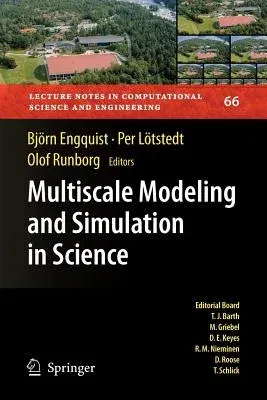Multiscale Modeling and Simulation in Science (2009)Paperback - 2009, 1 December 2008

Qty
1
Turbo
Ships in 2 - 3 days
In Stock
Free Delivery
Cash on Delivery
15 Days
Free Returns
Secure Checkout
Part of Series
Lecture Notes in Computational Science and Engineering
Print Length
320 pages
Language
English
Publisher
Springer
Date Published
1 Dec 2008
ISBN-10
354088856X
ISBN-13
9783540888567
Description
Product Details
Book Edition:
2009
Book Format:
Paperback
Country of Origin:
NL
Date Published:
1 December 2008
Dimensions:
23.47 x
15.67 x
1.85 cm
Genre:
Science/Technology Aspects
ISBN-10:
354088856X
ISBN-13:
9783540888567
Language:
English
Location:
Berlin, Heidelberg
Pages:
320
Publisher:
Weight:
508.02 gm

